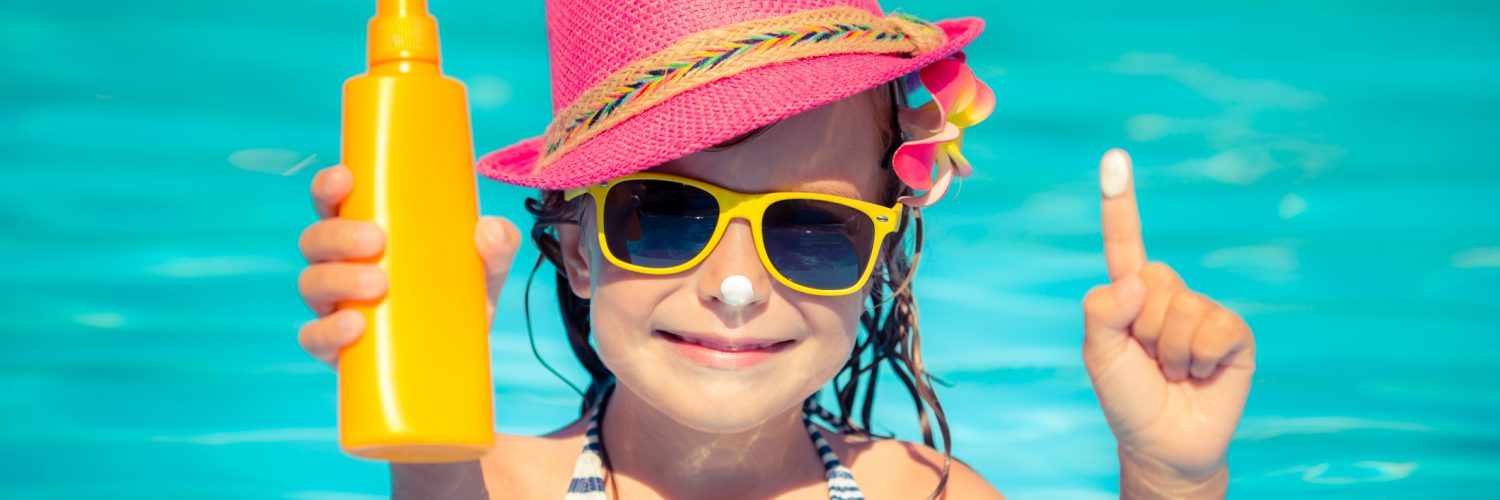Summer has (un)officially begun, which means sunscreen should now be a daily part of your routine to protect your skin from the sun’s harsh rays while spending time outside. However, deciding which sunscreen is best for you and your family can feel overwhelming. There are countless options to choose from, and the different labels and claims can be confusing at best. Here are a few things to keep in mind to help you pick the most effective and safe sunscreen.
What is ultraviolet radiation?
Ultraviolet radiation is emitted from the sun. There are two types of ultraviolet radiation that can cause damage to the skin: UVA and UVB. UVA rays aren’t absorbed by the ozone layer and penetrate deep into the skin; they are known to contribute to premature aging and skin cancer. UVB rays are partially absorbed by the ozone layer and are the main cause of sunburn. Be sure to choose a sunscreen that provides protection against UVA and UVB rays.
What should I look for on the sunscreen label?
Sun Protection Factor (SPF): Sun protection factor refers to the amount of sunburn protection that a sunscreen can provide to the average user. Pick a sunscreen with an SPF of at least 30 and be sure to reapply it at least every two hours, as well as after swimming or sweating. SPF only refers to protection against UVB rays.
Broad spectrum: Sunscreens that are “broad spectrum” protect against UVB and UVA rays. Since both types of rays can damage your skin and contribute to skin cancer, make sure that you choose a sunscreen that has the “broad spectrum” label.
Water resistant: Water-resistant sunscreens are ideal if you plan to do water activities or other activities where you may sweat. If a sunscreen bottle has the label “water resistant,” check to see how long the resistance lasts. No sunscreens are waterproof, and they must be reapplied at least every two hours.
Expiration date: If you have sunscreen left over from last summer, be sure to check the expiration date to make sure it is still effective. If you apply expired sunscreen, it may be as if you applied nothing at all.
Ingredients: Because of the amount and frequency in which sunscreen is applied, it’s important to be aware of the ingredients and their potential impact for our health. The Food and Drug Administration and Environmental Working Group recommend looking for sunscreens that include zinc oxide or titanium oxide. These ingredients are considered safe for skin as well as the environment.
Other important tips:
- When should you apply sunscreen? Slather on the sunscreen at least 30 minutes before spending time outdoors.
- How much should you use? It can be easy to underestimate how much you need to cover your whole body. A good estimate for the amount is roughly the size of a golf ball.
- What else should you do to protect my skin from the sun? Sunscreen doesn’t provide 100% protection against all UV rays. You should also use other protective measures such as limiting the amount of time spent in the sun and covering up your skin by wearing a wide-brimmed hat, light/loose clothing (so that you still get some cover from the sun, but don’t get too hot), and sunglasses to protect your eyes.
Enjoy the beautiful weather this summer, but stay safe by taking steps to protect your skin.
Check out any of these resources for more information about sun safety:



